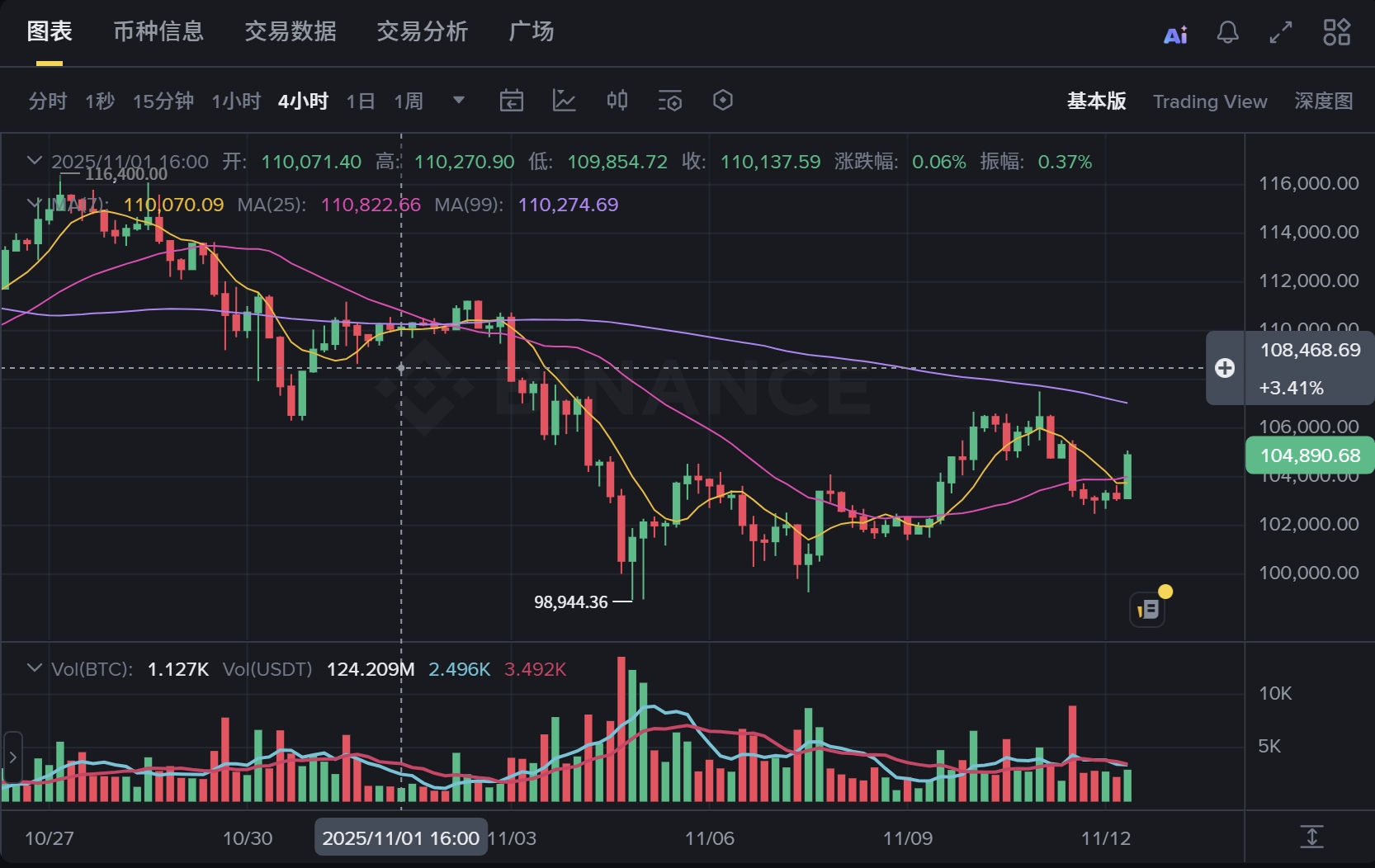
KEYTAKEAWAYS
- Bitcoin struggles to hold above $100K while breaking below its 365-day moving average, a signal often linked with bearish momentum and cooling liquidity.
- Institutional interest remains through ETFs, yet inflows stall and volatility drops, reflecting waning enthusiasm despite long-term optimism in digital assets.
- Social chatter shifts from innovation to gossip; exchanges focus on safety, confirming a market in pause where patience outweighs speculation.

CONTENT
Bitcoin slips below its 365-day moving average as liquidity cools and social sentiment fades, signaling a cautious market turning from hype to patience.

THE MARKET COOLS AFTER A LONG SUMMER
Morgan Stanley strategist Denny Galindo recently described Bitcoin as entering the “autumn” phase of its four-year cycle — a period when investors typically harvest profits before the next downturn. He warned that the “winter” phase, characterized by declining prices, could arrive sooner than many expect.
That warning aligns with recent market behavior. Bitcoin has struggled to hold above the $100,000 psychological threshold — a level many traders view as both a milestone and a resistance line. More importantly, it has fallen below its 365-day moving average, a long-term trend indicator that historically separates bullish from bearish momentum. Each time BTC has stayed under this line for several weeks, the market has typically entered an extended correction phase.
Adding to the concern, liquidity from major sources such as stablecoins and ETFs has stagnated. ETF inflows, once a key engine of institutional participation, have cooled to near-neutral levels, and stablecoin issuance has shown little net growth. In short, the capital that once fueled the rally is no longer expanding.
Meanwhile, Nomura Securities expects the Federal Reserve to keep rates unchanged in December after two earlier cuts. Chair Jerome Powell’s unexpectedly firm tone during the October press conference reinforced the notion that the easing cycle may pause — a move that could suppress appetite for risk assets, including Bitcoin.
THE BULLISH COUNTERPOINT
Still, not everyone agrees with this cautious outlook. Michael Cyprys, Morgan Stanley’s research head, noted that institutional investors continue to see Bitcoin as a hedge against inflation rather than a speculative play. With U.S. spot Bitcoin ETFs now managing more than $137 billion in assets and Ethereum ETFs around $22 billion, mainstream access to crypto has never been easier.
From the bullish perspective, Bitcoin remains within its structural uptrend on longer timeframes. Despite losing momentum, the asset has held above $90,000 for most of the past quarter — a level many analysts regard as the “higher low” defining the current macro range. Supporters argue that as long as inflation remains sticky and fiat volatility persists, Bitcoin’s store-of-value narrative will continue to attract capital over the long term.
Yet even among optimists, conviction has thinned. ETF inflows have stalled, and the U.S. dollar’s strength has dampened enthusiasm. Volatility — once Bitcoin’s defining trait — has compressed to its lowest point in months. This combination suggests that while belief in the long-term story persists, short-term momentum has clearly faded.
WHEN THE CONVERSATION SHIFTS
If social sentiment reflects market psychology, X (formerly Twitter) tells the full story.
The tone of crypto discussions has shifted dramatically: once dominated by project launches, tokenomics breakdowns, and airdrop rumors, it now revolves around exchange gossip, workplace drama, and “industry insiders” airing grievances.
This transformation mirrors a familiar phase in every market cycle — when excitement gives way to apathy.
The conversation moves from “What’s the next big thing?” to “Who said what?”, signaling that speculative energy has drained away. When traders have no narratives left to chase, they start talking about each other instead.
Even the exchanges have changed their tone.
Marketing slogans that once shouted “New listings!”, “High APY yields!”, or “Zero-fee trading” now emphasize “fast deposits,” “secure withdrawals,” and “regulatory transparency.” This pivot from growth to trust marks a clear behavioral shift — the industry is now focused on retention and stability rather than expansion.
SIGNS OF A BEARISH TILT
Taken together, the signals point toward a market quietly leaning bearish. Bitcoin’s break below the 365-day moving average has historically preceded multi-month corrections, and the failure to reclaim that level has reinforced caution. Liquidity growth has frozen, ETF flows have plateaued, and social activity has withered.
This doesn’t mean the next crypto winter has fully arrived, but it does indicate that the easy part of the bull cycle is over.
We’re in a transition zone — a period defined by smaller ranges, thinner volumes, and subdued conviction.
It’s not panic; it’s exhaustion. The market isn’t collapsing — it’s cooling.

A TIME TO STEP BACK AND RESET
In such conditions, the best strategy is not aggression but adjustment.
Investors should rebalance portfolios, secure profits, and maintain flexibility. Keeping part of one’s capital in stable assets allows the freedom to re-enter when the next clear trend emerges.
Patience is not passive — it’s strategic.
This phase offers the chance to review past cycles, study long-term indicators like the moving average, and understand how macro factors influence crypto liquidity. The lessons learned now will define performance when the next wave begins.
Galindo’s metaphor still holds true: Bitcoin’s autumn has arrived, and winter may follow. But just as every cycle cools before it blooms again, those who stay calm, preserve capital, and keep learning through the quiet will be the first to act when spring returns.












